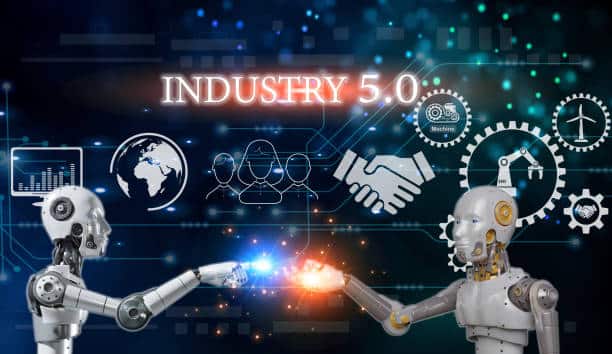In today’s fast-paced business scene, electronic change has turned into the main drive behind progress and achievement. From small start-ups to global partnerships, organizations are embracing the power of computer-enabled innovations to streamline operations, elevate customer encounters, and gain the upper hand. With the rise of computerized reasoning, distributed computing, massive information examination, and the Web of Things, organizations are going through an upheaval in the 21st century more than ever.
In this article, we will explore seven critical ways in which electronic change at a very basic level is reshaping the business world. From mechanizing manual cycles to personalizing promotion techniques, we’ll dive into game-changing systems and innovations.
The impact of electronic change on organizations

In today’s fast-paced business scene, electronic change has turned into the main drive behind progress and achievement. From small start-ups to global partnerships, organizations are embracing the power of electronic innovations to streamline operations, elevate customer encounters, and gain the upper hand.
With the rise of human-made consciousness, distributed computing, big information scrutiny, and the Web of Things, organizations are going through an upheaval in the 21st century more than ever.
In this article, we will explore seven critical ways in which electronic change at a very basic level is reshaping the business world. From mechanizing manual cycles to personalizing promotion techniques, we’ll dive into game-changing systems and innovations.
By owning and dealing with these computerized devices, organizations can open new doors for growth, increase operational productivity and make great meetings for their customers.
Expanding efficiency and effectiveness through robotics

Electronic change is significantly impacting organizations, changing the way they work and engage with customers. One of the critical advantages of electronic switching is the ability to robotically automate manual cycles, saving significant time and assets. This leads to expanded efficiency and effectiveness as reps can zero in on additional core business.
Also, robotics reduces the risk of human error, ensuring accurate and reliable results. Another huge result of computerized change is superior customer experience and engagement. With the advent of electronic innovations, organizations can now offer personalized encounters to their customers.
Through information research and customer experiences, organizations can tailor their objects and administrations to address individual issues and inclinations. This improves consumer loyalty as well as encourages customer loyalty and leads to business renewal.
Further developed customer experience and engagement
Robotics is at the heart of advanced change, enabling organizations to streamline operations and increase efficiency. By robotically creating monotonous and tedious tasks, organizations can reduce manual errors, streamline data assignment, and speed up processes.
For example, performing Cycle Automation (RPA) allows associations to automate information transmission, receipt management, and other authoritative assignments. This recovery time further develops accuracy and consistency. In addition, computerization extends past cycles of administrative centers and into customer-facing operations.
Powered by human brain power, chatbots and friendly assistants are changing customer support by giving instant reactions and personalized assistance. These smart frameworks can handle routine requests, opening up customer care agents to zero in on additional complexities. The result is further developing response times, improved consumer loyalty and cost of capital reserves for organizations.
The work of computerized reasoning and artificial intelligence

In the information age, information has emerged as an important resource for organizations. Computerized change has enabled organizations to collect, analyze and decipher vast measures of information to pursue informed choices. With advanced devices and methods of examination, correlations can gain remarkable nuggets of knowledge from information, revealing newly discovered patterns, patterns, and connections.
Using stages of business knowledge, organizations can visualize information as dashboards and reports, enabling partners to make informed decisions continuously. For example, retailers can use intelligence research to improve inventory management, discern transaction patterns, and gauge interest. This works in operational efficiency as it lowers costs and limits waste.
Difficulties and risks of electronic change
Electronic change has upended conventional plans of action, driving organizations to adapt or risk obsolescence. The rise of the online business, for example, has reshaped the retail business, with brick-and-mortar stores facing extreme competition from online malls. To remain effortless, organizations should embrace advanced innovations and influence them to their advantage.
Organizations that neglect to adapt to advanced disruptions risk missing out on a piece of the pie as well as leaving valuable doors open for growth. By embracing electronic changes, organizations can take advantage of new business areas, reach out to a more extensive crowd, and create inventive items and administrations. This requires a change in mindset, a willingness to embrace change and a commitment to persistent learning and improvement.
conclusion
Embracing the computerized future In order to effectively implement electronic change, organizations should adopt a meaningful methodology. Here are some critical systems to consider: Promote a logical vision and process:
- Characterize the ideal outcomes and goals of the e-change and fit them into the overall business methodology.
- Put resources into skills and competencies: Build a team with the necessary e-skills and competencies to drive the cycle of change.
- Cultivate a culture of growth : Encourage reps to embrace new innovations, try different things with new thinking, and relentlessly reach the next level.
- Work with innovation partners: Seek partnerships with suppliers and innovation experts to leverage their expertise and guarantee efficient execution.
- Focus on information safety and security: Implement robust network security measures to protect sensitive information and comply with guidelines.
- Monitor and measure progress: Set key performance indicators (KPIs) to track the impact of advanced change drives and make changes based on the information.
- Continuous adaptation and advancement: Electronic change is a constant interaction, which expects organizations to stay ahead of emerging developments and evolving customer needs.

